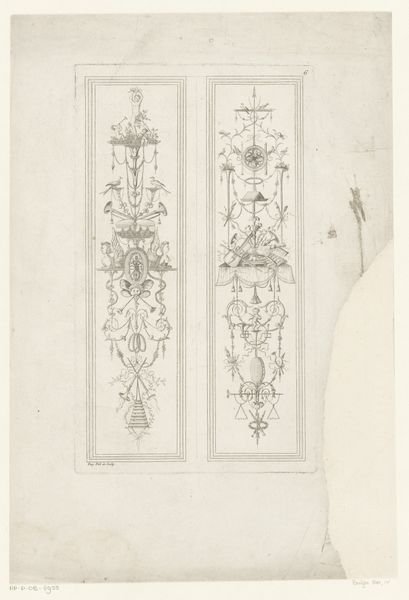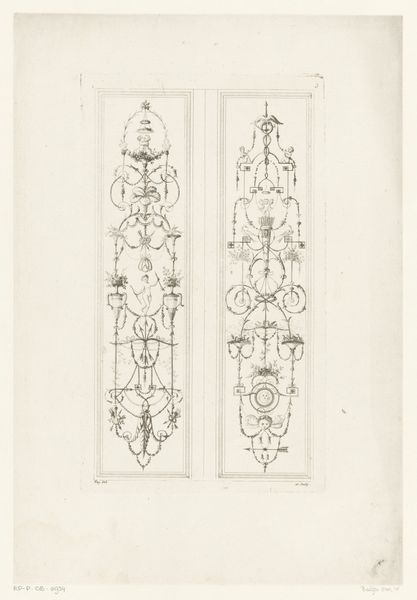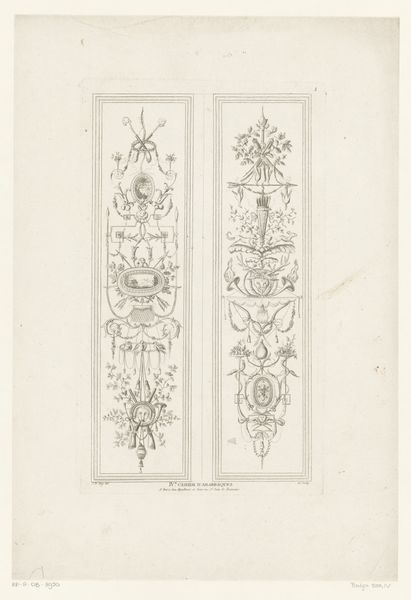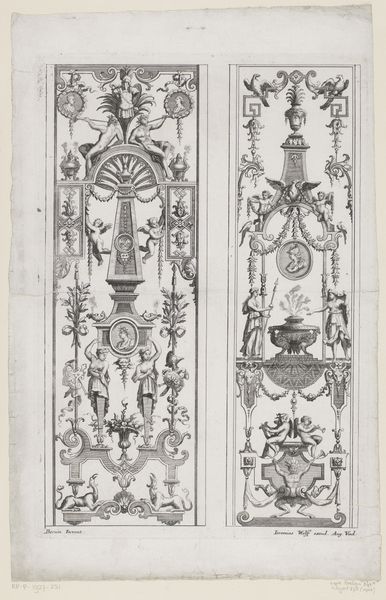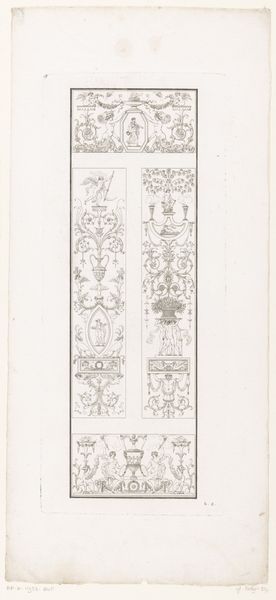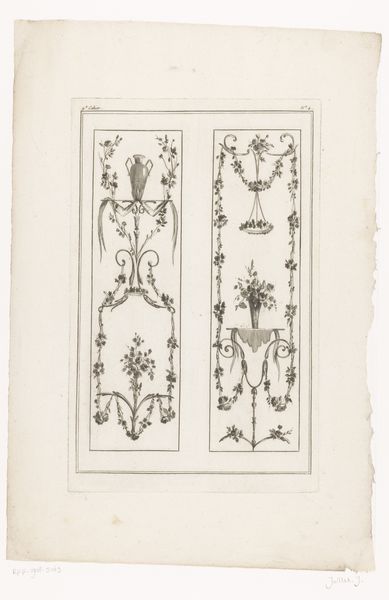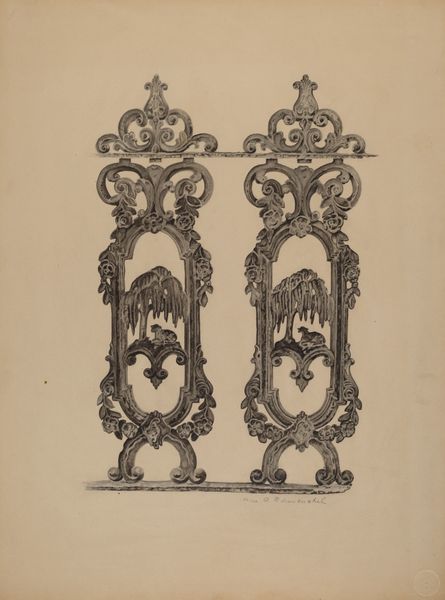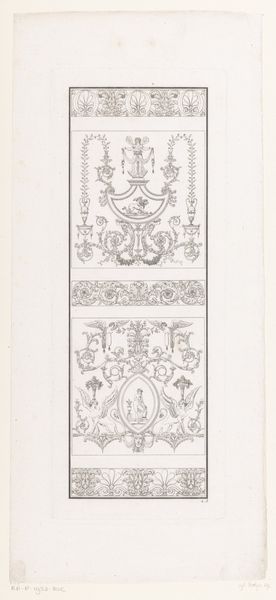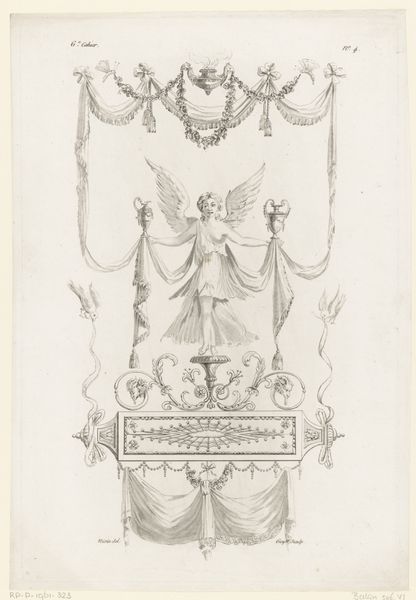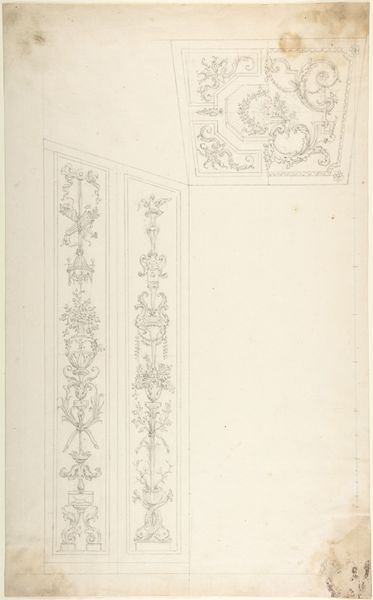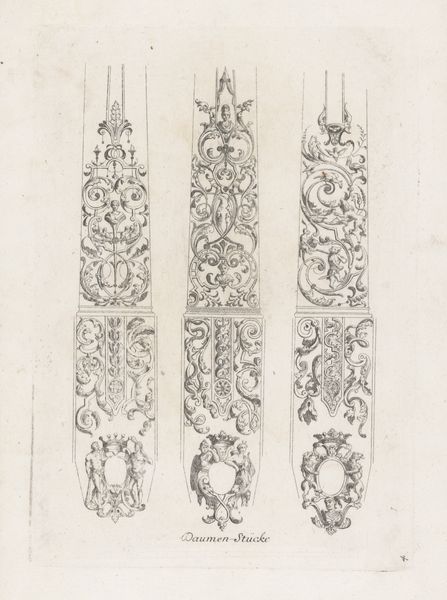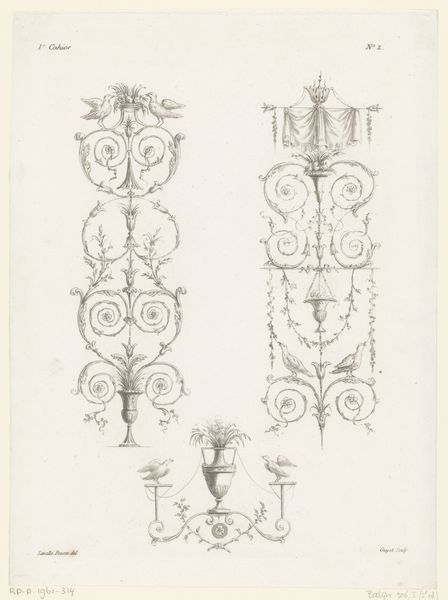
Dimensions: height 307 mm, width 185 mm
Copyright: Rijks Museum: Open Domain
Editor: Here we have Jean Baptiste Fay's "Arabesken met tuinlandschap en prieel", an engraving dating back to between 1784 and 1796. The decorative arts vibe is strong. I find the meticulous detail and symmetry really striking; it feels almost like a blueprint for wallpaper. What social and political messages are communicated in such a formal aesthetic? Curator: This piece encapsulates the late 18th-century obsession with order and ornamentation, reflecting the values of the ruling elite on the brink of revolutionary upheaval. How does this pursuit of aesthetic harmony contrast with the socio-political tensions brewing at the time? The arabesque, often employed to signal luxury, here attempts to contain nature itself. Consider the symbolism of a contained 'garden landscape', framed and controlled, almost as a distraction or a buffer to the radical change bubbling beneath the surface of aristocratic society. Does the work’s very structure suggest a need to compartmentalize and control a world that was threatening to spiral out of control? Editor: That's a great point! I hadn’t considered it in the context of the French Revolution, which definitely puts the formal structure in a new, ironic light. I was mostly caught up in the aesthetics. Curator: Exactly. The focus on symmetry and ornamentation can be interpreted as a response to, or even a form of resistance against, the rising tide of revolutionary thought. How might such controlled aesthetics, such decorative ‘precision,’ represent a deliberate distancing from the messy realities of social unrest? Editor: This makes me see the artwork as so much more than just a pretty pattern. Curator: Indeed. By understanding the historical context, we can unravel the complex relationship between art, power, and social change, allowing us to view these designs not as mere decoration, but as documents reflecting the tensions of their time. Editor: Thanks, this new viewpoint really enriches my understanding of the artwork!
Comments
No comments
Be the first to comment and join the conversation on the ultimate creative platform.
